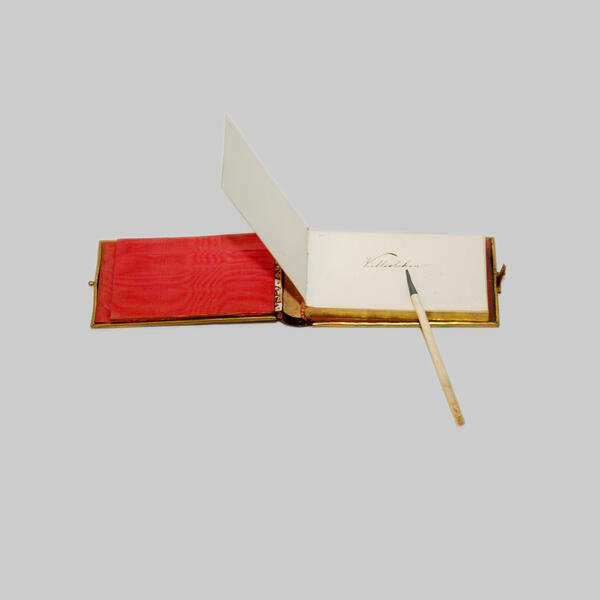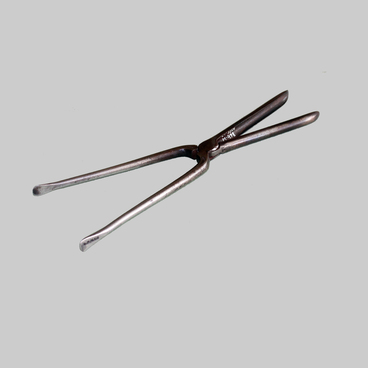The main attraction of respectable balls was the dance program, which was accompanied by a special ballroom ceremony. The ball required all participants to follow the rules of etiquette, emotional restraint and physical endurance. Accepting invitations from two gentlemen at once to the same dance was considered a huge and embarrassing mistake. This was considered bad form, and could even lead to a duel.
The most significant dances, such as the polonaise, cotillion, and square dance, required an invitation long before the event itself. Invitations were made to small and intermediate dances at the ball itself. But for some of the more successful women, it was almost impossible to get to the front of the line for even a small dance, let alone a waltz or a mazurka, as everything was decided in advance.
To avoid misunderstandings, each lady had her own special dance card book to take to the ball. It was a miniature accessory that allowed the young lady to write the name of each admirer across from the dance she had him down for. These small booklets came with a pencil, which was fastened with a special clip to the lady’s waist. A list of dances, completely “filled” with gentlemen, indicated the popularity and success of a lady, however, bragging about it was frowned upon.
After a while, these booklets evolved into real works of art. They were decorated with precious stones, enamel, used gold, silver, mother of pearl. Books with mother-of-pearl or bone pages were especially appreciated, since they could be used several times. Old inscriptions in such books could be erased and new ones made in their place.
There were no balls in Yalutorovsk. However, the pupil of Matvey and Maria Muravyov-Apostol, Avgusta Sozonovich attended a ball in Tobolsk. Whenever she was in town she would stay with the Muravyov couple.
The dance card book displayed in the Decembrists in Yalutorovsk exhibit was acquired from an antique shop by employee of the State Historical Museum, Alexander Sidorov. Along with other Historical Museum exhibits, the book ended up in the Yalutorovsk Museum Complex.
A miniature palm-sized book made of paper and leather. The cover was decorated with a metal frame. In the center you may notice a mountain range depicted in an oval frame. The inside of the cover is overlain with pink fabric and two pockets: one large and one narrow. A bone pencil with a lead tip was kept in the narrow pocket. It is now displayed in the exhibit as well.
The most significant dances, such as the polonaise, cotillion, and square dance, required an invitation long before the event itself. Invitations were made to small and intermediate dances at the ball itself. But for some of the more successful women, it was almost impossible to get to the front of the line for even a small dance, let alone a waltz or a mazurka, as everything was decided in advance.
To avoid misunderstandings, each lady had her own special dance card book to take to the ball. It was a miniature accessory that allowed the young lady to write the name of each admirer across from the dance she had him down for. These small booklets came with a pencil, which was fastened with a special clip to the lady’s waist. A list of dances, completely “filled” with gentlemen, indicated the popularity and success of a lady, however, bragging about it was frowned upon.
After a while, these booklets evolved into real works of art. They were decorated with precious stones, enamel, used gold, silver, mother of pearl. Books with mother-of-pearl or bone pages were especially appreciated, since they could be used several times. Old inscriptions in such books could be erased and new ones made in their place.
There were no balls in Yalutorovsk. However, the pupil of Matvey and Maria Muravyov-Apostol, Avgusta Sozonovich attended a ball in Tobolsk. Whenever she was in town she would stay with the Muravyov couple.
The dance card book displayed in the Decembrists in Yalutorovsk exhibit was acquired from an antique shop by employee of the State Historical Museum, Alexander Sidorov. Along with other Historical Museum exhibits, the book ended up in the Yalutorovsk Museum Complex.
A miniature palm-sized book made of paper and leather. The cover was decorated with a metal frame. In the center you may notice a mountain range depicted in an oval frame. The inside of the cover is overlain with pink fabric and two pockets: one large and one narrow. A bone pencil with a lead tip was kept in the narrow pocket. It is now displayed in the exhibit as well.



